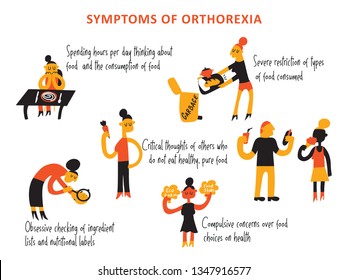
Many people wonder about how to eat the correct portion sizes. Since years, health conscious people have been asking this question. Healthy weight management and eating the right portion sizes are key factors in maintaining a healthy body. Proper portion sizes can make a huge difference in losing calories and maintaining a healthy weight. These are some ways to make sure your meals are manageable. Use your palm as a guide. You can use the circumference in your closed fist to determine the amount of protein, carbohydrates and fats in a meal.
The right portion size for most foods is equal to the size of your palm. A third of the food should be in a bowl. The other third should contain vegetables and fruit. To ensure the proper portion sizes, you should also make sure every meal contains at least one of the following: vegetables, fruit, and carbohydrates. The correct portion sizes should be divided into corresponding meal portions and you can do this by tracking the calories in each.

A portion size describes how much food you should consume. A portion is the same size as your palm when it comes to meat, poultry or fish. Starchy carbs like pasta, rice, bread and potatoes should be about the same size as a clenched fist. Your hands should measure the volume of one cup ice cream. You can use your thumb, middle finger and index finger to make a small dessert.
The size of your portion control plate will depend upon your personal preferences, household budget, and other factors. Next, decide on the serving size. It is important to select a plate with the right portions to avoid eating too much. Serving sizes are the same for every meal. A glass of juice, or fruit, is the same. A glass of juice contains just enough calories to provide a small portion.
The portion control plate should be able to meet your needs and fit within your budget. This will help you control your portion sizes. For instance, your plate should be equal in size to your plate. The right size is also important for your health. The right amount of food is necessary to maintain a healthy body. You don't have to adhere to the recommendations. It's important that you choose the right plate to fit your lifestyle. This will enable you to have the best health and weigh the most.

A label on the food you eat can help you control how much. You will find the Nutrition Facts information on the label. This will show you how much you can eat of the product. Once you understand the concept, it will become second nature to you to eat the right amount. You'll feel full sooner if you have a healthy diet. A smaller plate is more convenient and helps you manage your portion control.
FAQ
How often do people fast?
People who are on a ketogenic diet only fast once a week. However, there are some who fast twice per week. Some others fast three days per week.
Each fast has a different length. Some people fast for 24 hours, whereas others fast for 48 hours.
Some people even go longer than 72 hours. However, these extreme cases are rare.
How can busy people lose their weight?
Losing weight is as easy as eating less and working out more.
Overeating will lead to weight gain. If you don't exercise enough, you'll also gain weight. You can start losing weight if you combine these simple habits.
How long should I fast intermittently to lose weight
The answer is not as simple as you might think. It is important to take into account a number of factors when deciding the optimal days for fat loss. These are:
-
Your age. If you are younger than 40, intermittent fasting might be too difficult because you have less time for recovery after each fast. If you are older than 60, you might find it difficult to maintain a prolonged period of daily fasting.
-
Your current body composition. If you already have a lot of muscle mass, you'll likely benefit most from longer periods of fasting. However, if you have little muscle mass, then shorter periods of fasting may be better suited for you.
-
How physically active. You may need to increase your fasting time if you exercise often. This will ensure you get enough rest between workouts.
-
Your past medical history. Some people with medical conditions like diabetes, heart disease, cancer, etc., may require additional fasting monitoring.
-
How do stress and anxiety affect you? Stressful situations often make us eat less. To avoid this, you might want to increase the lengths of your fasting window.
-
The type of diet you follow. Certain diets, like ketogenic diets, may require even longer fasting periods.
-
Your sleep quality. The quality of your sleep is also a factor in increased appetite and decreased metabolism. Therefore, it may take some experimentation before determining what works best for you.
-
The amount you eat of protein. Consuming more protein helps to stabilize blood sugar levels. This could lead to lower insulin levels. This would allow you be more consistent in your fasting.
-
It doesn't matter if you want to gain or lose fat, those who are trying for weight gain will often require longer fasting periods.
-
How many calories do you consume in your fasting windows? Fasting fewer calories per day may result in greater fat loss than fasting for more calories per day.
-
Your overall fitness level. People who are fit and fast burn more calories per day.
-
Your gender. Women tend to have a greater appetite than men, so they might need to fast for longer periods. Women have smaller appetites than men, so they may need to fast just 20-30 minutes each day.
-
Your lifestyle. Are you someone who is active? Do you do a lot of exercise each week? Do you have a job that requires you to sit at a desk all the time? These factors could affect how much you should fast.
-
How much do you spend per month on food? Eating healthy foods doesn't necessarily mean spending much money on groceries. It's possible to save money by purchasing whole grains rather than white bread, fruit instead of candy bars, lean meats instead fatty cuts, and fruits instead of candy.
-
It is vital that you control your hunger. If you don't want to skip meals, you might not need to fast as long as other people do.
What level of exercise is required to lose weight?
There are many factors that impact the amount you exercise to lose weight. However, generally speaking, most people need at least 30 minutes of moderate physical activity five days per week.
The American College of Sports Medicine recommends 150 mins of moderate-intensity aerobic exercise per week spread over three consecutive days.
You can lose 10 pounds by doing 300 minutes of moderate-intensity exercises each week, for example. You can do this by walking fast, swimming laps or biking, as well as playing tennis, golfing and hiking, or jogging, running or other similar activities.
Consider doing 20 minutes of vigorous exercise thrice a week if you are just starting out. It could be sprinting, lifting weights, jumping rope or fast walking.
Aerobic exercise also helps burn calories and build muscle mass. Muscles burn more calories than fat. So building muscle can help you lose weight faster.
Statistics
- According to Harvard Health, it's estimated that a 155-pound (70-kg) person burns around 167 calories per 30 minutes of walking at a moderate pace of 4 mph (6.4 km/h) (5). (healthline.com)
- One 6-month study showed that simply doing 11 minutes of strength-based exercises 3 times per week resulted in a 7.4% increase in metabolic rate, on average. (healthline.com)
- One study in 9 active men found that HIIT burned 25–30% more calories per minute than other types of exercises, including weight training, cycling, and running on a treadmill (18Trusted Source (healthline.com)
- Another study found that 24 weeks of weight training led to a 9% increase in metabolic rate among men, which equated to burning approximately 140 more calories per day. (healthline.com)
External Links
How To
How to lose weight fast without exercise
Fast weight loss is possible by eating fewer calories than you burn. This will make your body burn more fat to generate energy. Your body will start to reduce muscle tissue for energy if you don't eat enough calories. If you don't exercise while dieting, you can still lose weight. But you will probably lose even more.
The key to losing weight fast without working out is to reduce your calorie intake. Most people think they should reduce their food intake to lose weight, but this isn't true. You want to eat fewer calories than what you burn when you are trying to lose weight. How much food should you eat each day? It all depends on the type of activity that you do each day. A person who walks 3 miles a day would need only 2,500 calories per day. An individual who works all day at a desk would consume around 1,600 calories each day. A person who exercises frequently (like lifting weights), would only need about 1,600 calories per day.
When you want lose weight, it is important to cut down on your caloric intake. Many people believe they should eat less food to feel better. However, this is false. Your body doesn’t care if you’re hungry or full; it simply wants to work properly. In order to lose extra weight, it is essential that you keep track of how many calories you consume. There are many apps available online that allow you to monitor your calorie intake. Some of these apps include MyFitnessPal, Calorie Counter, and LoseIt!